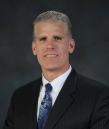Reflecting on 2016, and a Look Ahead
As 2016 comes to a close, I am grateful for the opportunity to engage in meaningful, important work with the CSAC staff and the County Supervisors, Administrators and other leaders at the state and federal level. I count myself very lucky to consider you a group of friends as well as colleagues. That’s especially important because, often, our work involves complex issues. So while I pause to enjoy the traditions of this season with friends and loved ones, I do so knowing that we accomplished a lot in 2016.
Our legislative team represented county interests on more than 500 bills in the state capitol, advocating successfully on issues as diverse as cap and trade, the MCO Tax Fix, the Sustainable Groundwater Management Act, and tree mortality. And we continued to enhance our already strong relationship with the Governor and Legislative Leaders. The Governor met with our Officers and our Board of Directors several times over the course of the year, providing counties critical opportunities to help shape state policy.
We continued to reach out to our members in 2016, expanding the CSAC Institute to four satellite campuses around the state and conducting four very successful regional meetings in Southern California, the Bay Area, the Foothills and Northern California. CSAC was instrumental in helping San Diego County Supervisor Greg Cox become Second Vice President for the National Association of Counties. And internally, we were able to eliminate all debt in 2016, putting CSAC on its firmest financial footing in years, well-positioned to be an even more effective advocate for our members.
But I know we can’t rest on our laurels. In 2017 we will be busy forging relationships with the new administration in Washington DC and ensuring our voice is heard on new policies it enacts, as these changes could have a dramatic impact on California counties and the work we do. Here in California, some of the major issues we’ll continue working on in 2017 include homelessness, tree mortality, transportation funding, and marijuana regulation.
Homelessness remains a pressing issue in virtually every part of the state. While there is no one solution, there are steps we can take to reduce homelessness and its impact on our communities. CSAC and the League of California Cities formed a homelessness task force in 2016. Together, along with the State Department of Housing and Community Development, we are working to increase housing opportunities, address mental illness and substance addiction, and provide education and job training. I look forward to continuing this work in 2017.
The transportation funding crisis has been a particularly difficult problem to solve, but we have made progress. Our sustained education campaign has firmly established with policy-makers that local streets, roads and bridges are in a sad state of disrepair and getting worse. They also recognize that the longer we wait to fix our roads and bridges, the more it will cost in the long run. We have a promise from the Governor and Legislative Leaders that they will address this issue early in 2017. As a leading member of the Fix Our Roads coalition, we are aggressively pushing for a lasting solution.
As you know, California voters recently decided to legalize the recreational use of marijuana and many counties are trying to find the right way to manage this new reality. Some counties are ready to allow growing and selling marijuana and deal with those activities through local regulations and taxes. Others are not. CSAC remains committed to maintaining local control over these decisions. We are planning a series of educational events in 2017 to equip counties with the information they need to wade through this complex issue. I also recently participated in the first meeting of State Treasurer John Chiang’s Cannabis Banking Task Force. I appreciate his attention to the issues created by what is currently an all-cash business, and the impact that has on local governments. This work will also continue into 2017.
Trees continue to die in our forests, and while there is not much we can do to save them, we have been able to increase the financial resources available to deal with the hazardous trees that threaten roads and other infrastructure. We will continue to work with the Governor’s Tree Mortality Task Force and through direct advocacy to maximize the resources we can bring to bear on that problem. With more than 100 million trees already killed by drought and infestation, this issue will be with us for many years to come.
These are just a few of the issues I know are waiting for us in 2017. I’m sure there will be others as the Legislature gets back under way and the Governor submits his budget in early January. There will be no shortage of work to do next year. But now, as the holidays are upon us, we can all pause for a moment to be grateful for friends and family, for the bounty on our tables, and for the work we do making California a better place for us all.










































